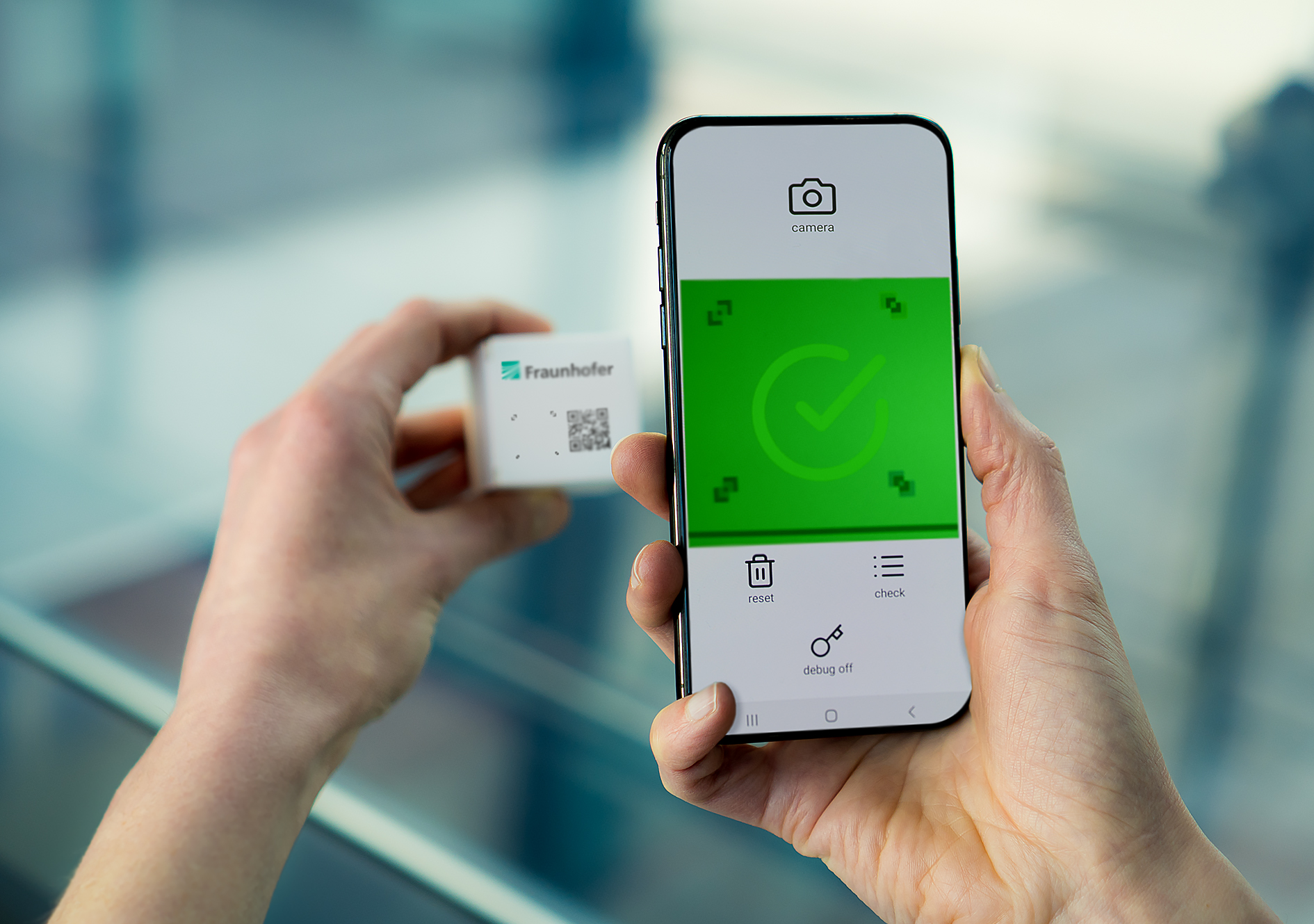Interpack 2023: Demonstrator for counterfeit-proof barcodes with offline verification
SmartID – Detect product piracy quickly
Counterfeits of high-quality products such as medicines, cosmetics, watches, or food and beverages circulate in large numbers, especially in online retail. Consumers barely have a chance to verify the authenticity of a product. In the SmartID project, scientists at Fraunhofer are now developing a counterfeit-proof barcode system for authenticity verification simply by using a smartphone without accessing a database. The team is presenting a SmartID demonstrator for the first time at the Interpack 2023 trade fair for packaging in Düsseldorf.
Interpack 2023 | May 4-10 2023 | Düsseldorf | Hall 4, Booth C54 (VDMA-booth)

The market for counterfeit products is booming – especially in online retail. For example, according to an estimate by the World Health Organization WHO (2020), one in ten medicines purchased online is a counterfeit – from lifestyle drugs to essential medicines. This not only has an economic impact. In serious cases, it may cause severe health effects. But how do consumers distinguish whether a product is genuine or counterfeit? Barcodes and QR codes are supposed to help convey information about products to consumers and allow traceability of products. However, even these labels can be counterfeited or copied.
Surface texture as a unique safety feature
In the SmartID project, the Fraunhofer Institutes for Applied Polymer Research IAP, Secure Information Technology SIT and Open Communication Systems are developing a novel labeling system to uniquely verify and authenticate products via smartphone.
They take advantage of the fact that every package possesses a unique, characteristic surface texture. The texture is comparable to a human fingerprint and can be detected by standard smartphone cameras. A smartphone scans the printed barcode and, at the same time, the texture of the surface. The barcode already contains information about the texture. A specially developed app compares whether the information stored in the barcode matches the data from the scanned surface. A tamper-proof barcode is created.
The SmartID labeling system was designed in such a way that it not only serves to authenticate the product, but may also contain additional information about it. The system is also easy to integrate into commercial printing processes during the manufacture of the packaging.
Offline! Authenticity check without database and internet connection
"With the SmartID technology, everyone in the supply chain - from the manufacturer to the intermediary and customs to the end consumer - will be able to check with an smartphone app whether a product bearing the SmartID code is genuine. The special thing here is that the app operates offline, i.e. without access to a database and without a connection to the internet," Dr. Tobias Jochum explains, coordinator of the project at the Fraunhofer Center for Applied Nanotechnology CAN in Hamburg, a research unit of the Fraunhofer IAP.
For manufacturers, there is another advantage: no IT infrastructures have to be set up. Since there is no need to use a central database, various IT security and data protection challenges are not required. In addition, there are no costs associated with the installation, commissioning and maintenance of databases. Konrad Öchsner, Innovation Manager at Koenig & Bauer Coding and new advisory board member of the SmartID consortium, adds: "The complexity of the IT infrastructure can be significantly reduced by SmartID. Moreover, by avoiding the operation of databases or blockchain applications, no additional carbon dioxide is released, thus reducing the carbon footprint."
High sensitivity with quantum materials
The Fraunhofer consortium will be presenting a first SmartID demonstrator at the stand of the German Engineering Federation VDMA as part of Interpack 2023. Developments are ongoing: "An important requirement for SmartID barcodes is that they occupy as small an area as possible," Jochum says. "As the project progresses, we are therefore optimizing the system in terms of its required area and also its sensitivity. In this context, quantum materials play a key role. They enable significantly more features of the surface texture to be detected on a smaller area. We are already looking forward to discussing various application scenarios with our visitors at the Interpack trade fair."
Last modified: